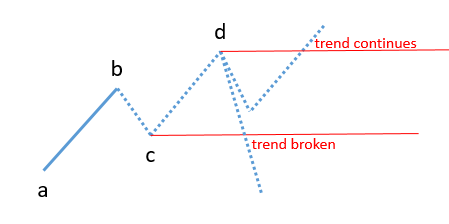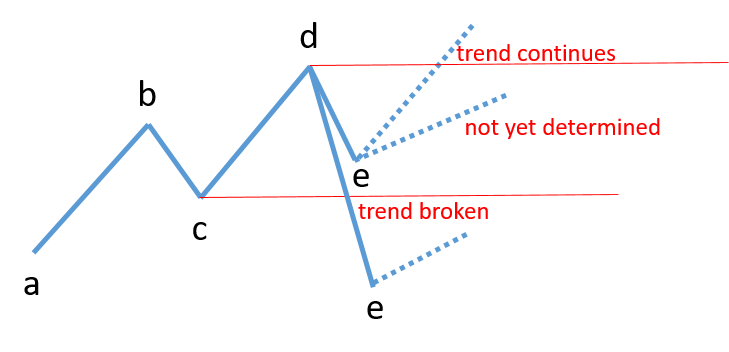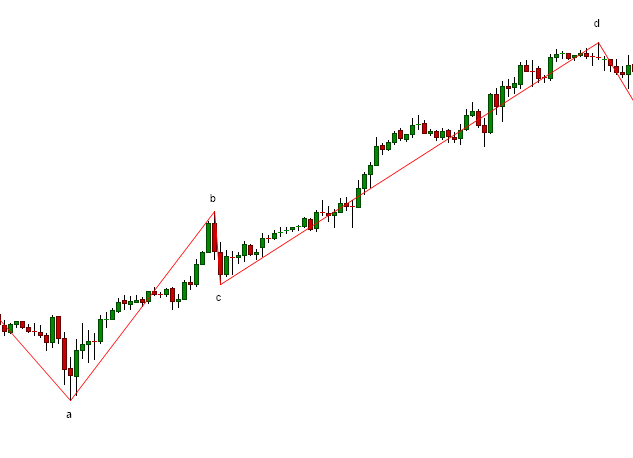Latest Posts
-
Results of the initial study
Here are the results for the initial study of 2019 hourly crude oil futures. For reference, I’ve included the diagram from the previous post: 
-
Detecting 'complex' trends
The initial test couldn’t answer the question of how many trends continue, because it couldn’t decide which pivot breaks first, c or d. If it’s c, the trend is broken but if it’s d, the trend continues.

In order to answer this question I’ve written a new TradeStation ‘ShowMe’ called TrendPublisher (plus a bunch of analysis code in Octave). Unlike AdaptiveZigZag, TrendPublisher does not assume that a,b,c,d, etc are consecutive pivots, as they would be in a simple trend. -
An initial study
Now let’s see if the foundations established in the previous posts allow us to tackle some of the interesting questions about trends.
We need a decent-sized data set, so I’ve used AdaptiveZigZag to identify the turning points from a whole year’s worth of hourly crude oil futures data (I’ve put the details at the bottom of this page to avoid clutter). It’s easy enough to identify each sequence of 4 consecutive pivots a, b, c & d that meet the criteria for a trend described earlier. Then we can count how often the next pivot, e, breaks the trend (i.e. is below c in an uptrend 1).
-
Trend continuation
So far we’ve laid some foundations by showing:
- what I mean by uptrends and downtrends
- how I make my choice of turning points objective using AdaptiveZigZag
-
Problems choosing turning points
In the previous post I showed what we mean by uptrends and downtrends. This works well provided the turning points a, b, c & d are obvious. But now let’s look at a more difficult case. This diagram shows a downtrend with price falling from high a to low b, rallying and then breaking down through b, leaving c as the controlling high.
-
Trend basics
The simplest definition of an uptrend is where price starts from a low, rises to a local high, then falls to a local low then breaks out to make a higher high.

There are other ways to define trend. For example many people will try to draw a trend line joining the lows in an uptrend. For now, I’m looking for the simplest possible rules for trends, so I’ll stick with the picture above in which an uptrend occurs when we have higher highs (“HH”) and higher lows (“LL”).